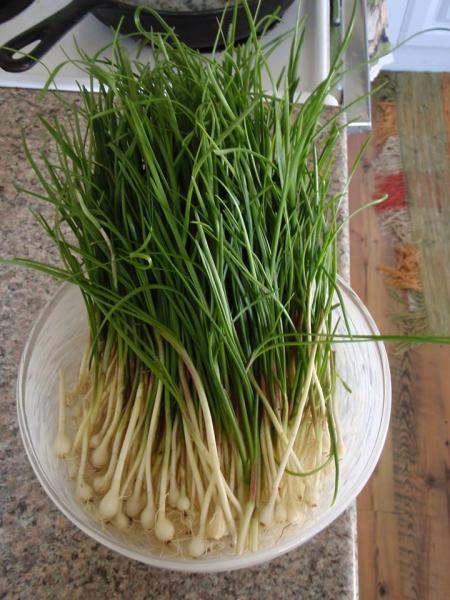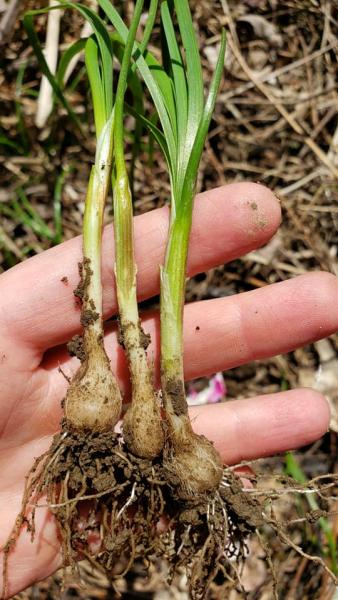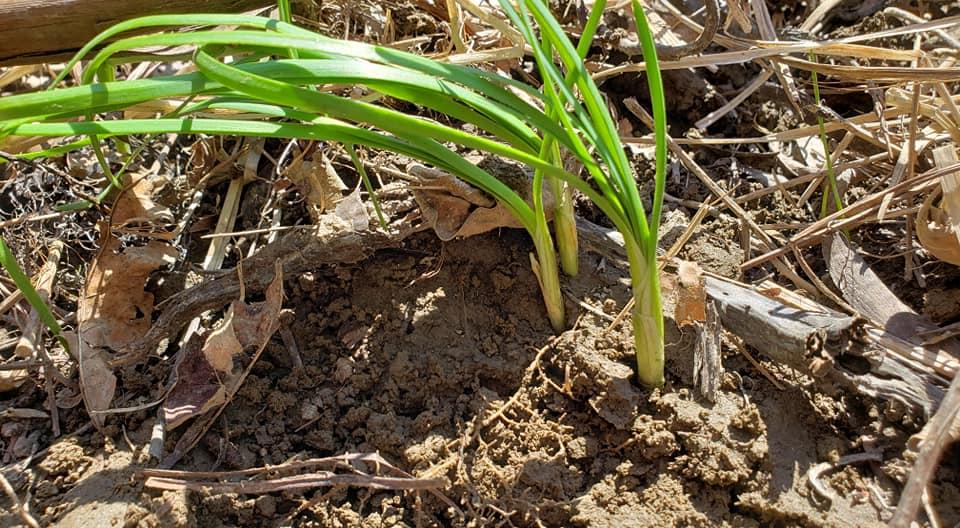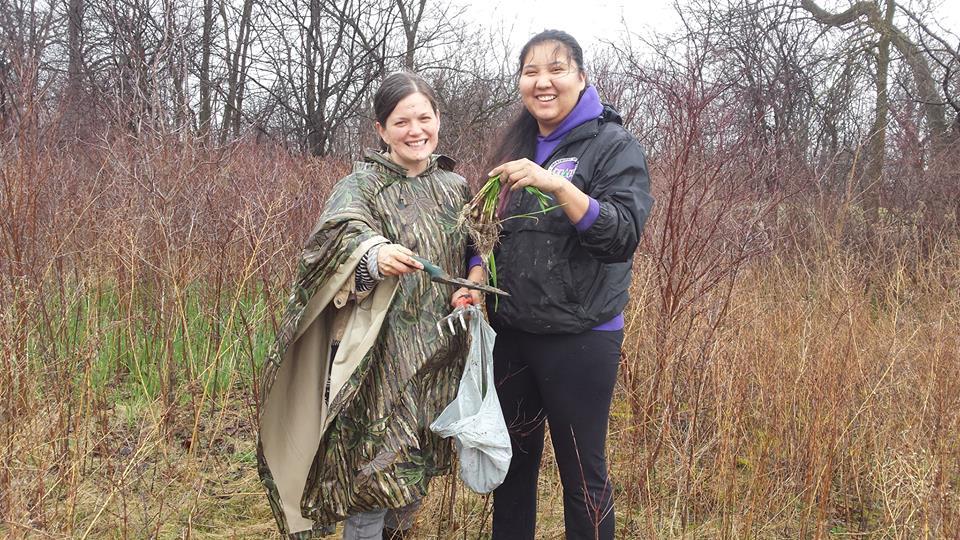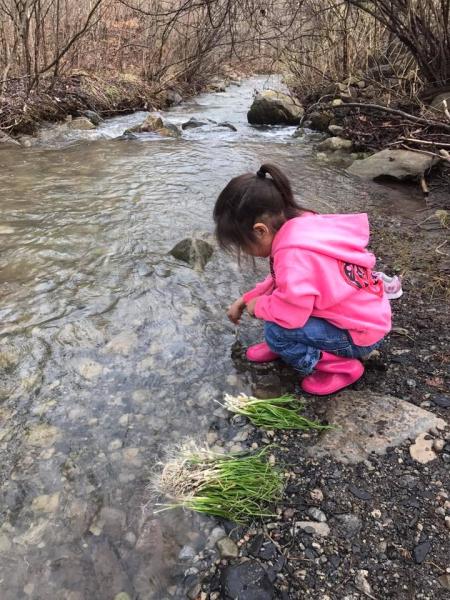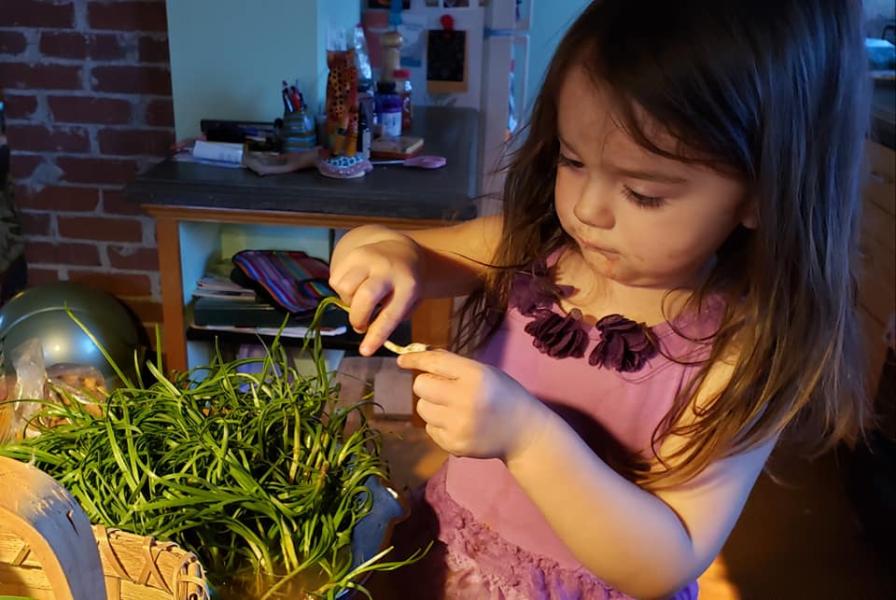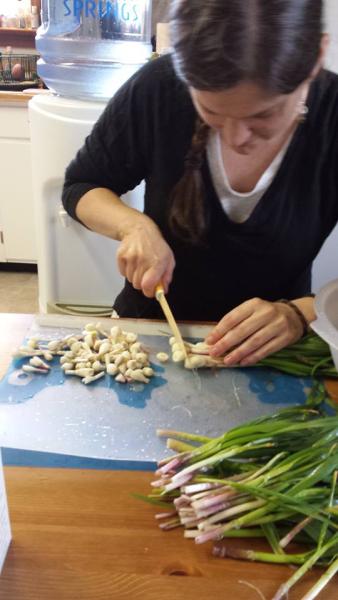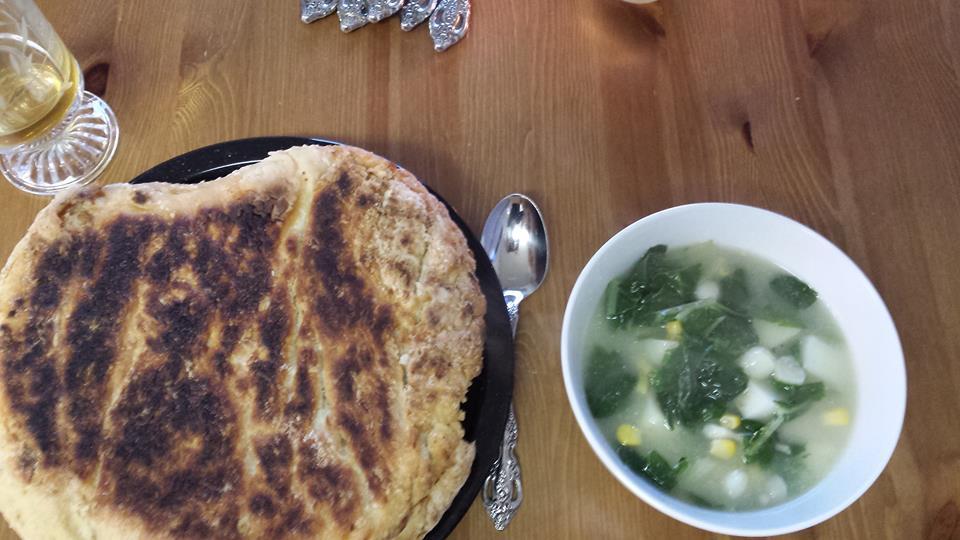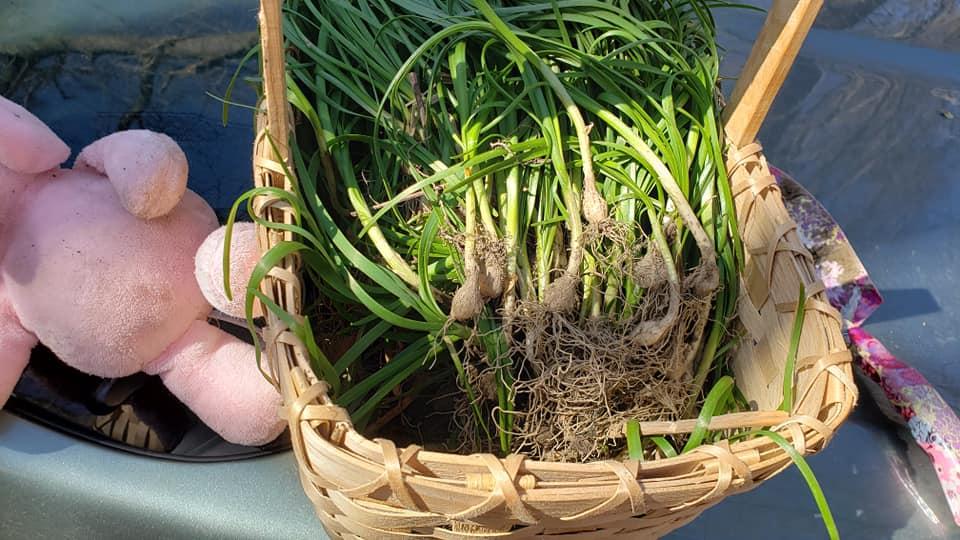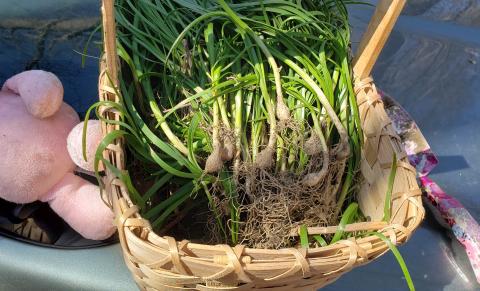
Names and Their Meanings
Wild onion - Allium canadense
Nodding Onion - Allium cernuum
Field Garlic - Allium vineale
Wild onion
Description
Wild onions/ meadow garlic are a spring ephemeral, among the first plants to emerge in the springtime, flowering from April to June before the canopy closes. Their leaves are flat and solid, branching off from the base of the stem. Their bulbs are generally round to slightly oblong, and are covered by a fibrous net or mesh. It thrives in a variety of habitats, all of them moist, such as upland and floodplain woodlands; moist meadows near rivers, banks of streams, sandy open meadows, fields and pastures, even roadsides and waste areas, so long as there is not too much competition from taller plants. However, Wild onions especially like to grow along rivers and on floodplains.
Conservation Status
Ranked S5 (Secure) in Ontario and New York State
Nodding Onion
Description
Nodding wild onion is an attractive native perennial. It has white to purplish/pinkish/red compound bell-shaped flowers that bloom in the summer, whose florets radiate outward from the center in an umbel at the nodding terminal end of their stalk. Leaves are simple and entire, thin and flat. It grows to a height of 11 – 23 inches. Nodding onion grows in shady forest areas, open woods, rocky soils, and bluff edges, and prefers well-drained soil, medium moist to dry.
Conservation Status
Considered S1 (Imperilled) in New York state, and a conservation status is not listed for Ontario. However, it is notable that this species, although it has a wide range across North America, is rare, listed as possibly extirpated in some places, imperilled and vulnerable in others. Allium cernuum, Nodding onion, should not be harvested at all, due to its imperilled status.
Field Garlic
Description
Wild garlic is a naturalized wild Allium that is also an ephemeral in the spring, dying back in the summer, and reproducing underground through bulbs. The leaves are round and hollow, filiform and narrow. The bulbs do not have a net, but a thin papery sheath (like garlic). The bulbs can also grow to be compound, like garlic. Wild garlic grows in anthropogenically disturbed habitat, meadows and fields in clumps.
Conservation Status
Ranked exotic and sometimes, aggressive. It was likely introduced by European settlers.
Wild onions are also collectively often referred to interchangeably as wild garlic, meadow garlic, meadow onions. This survey features two native and one naturalized wild onion species that grow in the Northeast and Great Lakes regions. “Allium” refers to onions; “canadense” refers to Canada; “cernuum” means nodding; and “vineale” is Latin for garlic, and means “of the vineyard.”
Wild onions are collected and eaten in the spring by Indigenous people all throughout Turtle Island (North America), wherever their species grow. Indeed, place names such as Chicago (Illinois) and Winooski (Vermont) are adaptations of Indigenous names that described places where wild onions and leeks historically grew - and sometimes, still do. The good thing is, most of them are plentiful, nutritious, and deeply historical.
Hickory Edwards of the Turtle Clan from Onondaga Nation was the first person to teach Dr. Dolan how to harvest and cook wild onions. His father Rick Edwards had taught him where they grow in the forest understory and in sunny floodplain areas along Onondaga Creek (and other rivers and creeks). In early spring 2014, Hickory Edwards and Jessica Dolan kayaked down Onondaga Creek to harvest Wild Onions along the way. During this journey, Hickory taught Dr. Dolan the Haudenosaunee ethics he had learned for harvesting onions, as with other plants. One is not supposed to harvest the first one you see, and it’s important to harvest only a small percentage of the patch – or none at all, if there are only a few.
Wild onions are among the first wild edibles that come up in the springtime, and are known as “blood cleaners” for blood that has become “stagnant” during the winter, due to less physical activity and circulation. People collect these springtime foods and make them into soups and other foods throughout Haudenosaunee and Anishinaabe homelands. Eating them is thought to be a nutritious tonic like drinking maple sap and sassafras, for cleaning out the clogging in our bodies that might have built up over winter. Depending upon the weather and the location, they appear in late March or April. Native people often harvest wild onions to make into an early-spring nourishing soup, such as one made with onions, potatoes, green beans, stock and flour or cream to thicken it, and eat it with scones or pan bread. You can use them in dishes in place of scallions or garlic. Chief John Arthur Gibson described wild onions and garlic to F. W. Waugh at Six Nations of the Grand River in 1912 as being used for pink dye. He also described the bulbs and leaves of wild onions and leeks as being cooked with butter and salt and eaten like a vegetable, and also being used to make soups.
